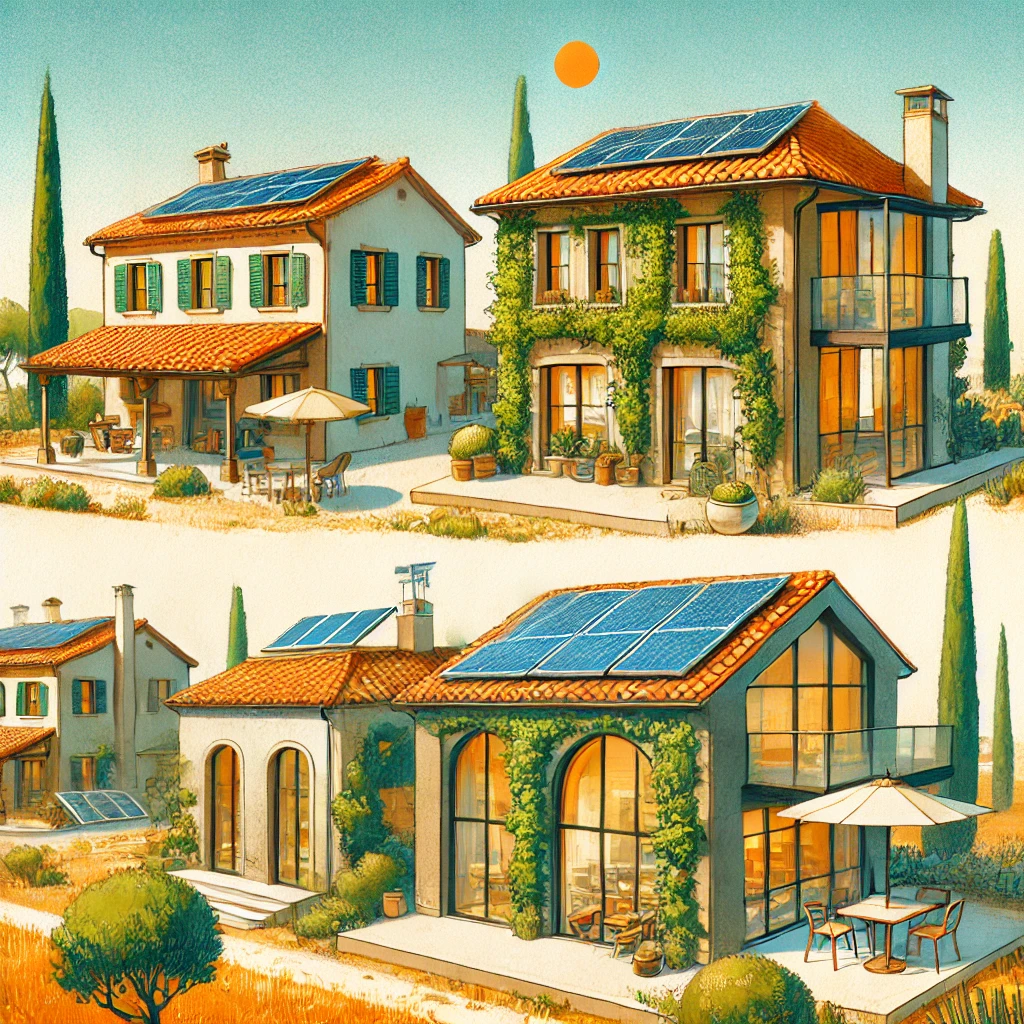What are the age characteristics of buildings in Italy?

On Friday, a new directive from the European Union was finally approved, introducing a whole range of new standards regarding the energy efficiency of residential buildings. In Italy, this directive is often referred to as the "green homes directive." The main goal of this document is to ensure the construction of new buildings that will not emit carbon dioxide by 2050. Additionally, the directive aims to significantly reduce energy costs and minimize the harmful impact on the environment of existing residential properties by 2035. To achieve these goals, it is expected that major renovations will be carried out to improve the thermal insulation of buildings and update outdated energy systems.
Italy voted against this directive, joining Hungary. The main reason for their disagreement is economic considerations. Italy's Minister of Economy, Giancarlo Giorgetti, emphasized in his statements that although the directive is...“wonderful”and“ambitious”An obvious question arises:“Who will pay? Families? States? Europe?”Determining the exact costs associated with implementing this directive is quite challenging, but they are likely to be significant. This is especially true for Italy, where most buildings have relatively old structures and consume a lot of energy.
According to Eurostat data collected and processed by the publication Sole 24 Ore in 2021, about 54% of residential buildings in Italy were built before 1970, while the average figure for Europe is 44.8%. However, Italy is not the leader in terms of building age in Europe — Sweden, Denmark, and Belgium are ahead in this regard, with the percentage of old buildings being 64.4%, 62.4%, and 61.3% respectively. The share of old buildings in Germany and France is also quite high, at 53.6% and 52.7% respectively.
The current level of building aging leads to widespread inefficiency in the energy sector. The most noticeable problem is the poor ability of walls to retain heat, which results in the need to spend a lot of energy on heating in winter and cooling in summer. One effective way to reduce energy costs is facade insulation, known as“thermocapsule”that reduces heat loss through the walls.
Italy is among the ten countries in the European Union with the highest per capita emissions from heating and cooling buildings. Therefore, to comply with the requirements of the new directive, each EU member state will need to significantly reduce average energy consumption: by 16% by 2030 and by at least 20% by 2035. The main way to achieve these goals will be to increase the energy efficiency of the least efficient buildings.
13 May 2025
14 May 2025
14 May 2025




Energy efficiency classes are important for understanding the pollution levels of buildings. They range from A (the most efficient, with a consumption of no more than 30 kWh per square meter per year) to G (the least efficient, with a consumption of over 160 kWh). Typically, class D is considered sufficient for modern standards. The class is assigned based on a certificate known as APE, which is required only when selling, renting, or applying for construction subsidies.
Unfortunately, complete data on the energy classification of all buildings in Italy is lacking, although the available information is quite representative for more than 12 million buildings. According to ENEA (the National Agency for New Technologies, Energy and Sustainable Economic Development), about 3.4 million out of 4.9 million buildings have energy efficiency classes below D, which accounts for nearly 70% of certified buildings. Most of these structures are old buildings that were constructed using outdated technologies and cannot boast high energy efficiency.
There are many estimates regarding the cost of transforming buildings to meet new requirements, but they vary depending on the source of information. According to the National Association of Builders, ANCE, around 2 million buildings will need to be upgraded to meet new standards over the next 10 years, which will require investments of between 40 to 60 billion euros per year. The total costs for Italy could reach several hundred billion euros. It is also likely that part of the funds allocated by the European Union will be used to finance such work.
The European Union directive arrives in Italy at a time when the government is expressing dissatisfaction with tax incentives in construction, considering them extremely costly compared to the modest results in improving environmental conditions. The total expenditure on these tax incentives for the renovation of residential properties from October 15, 2020, to April 4, 2024, amounts to about 219 billion euros, of which 160.3 billion is attributed to the Superbonus and 58.7 billion to other incentives. Despite the enormous sums, the Superbonus has only managed to improve the energy efficiency of 494 thousand buildings — just a quarter of the needed 2 million.
According to the ENEA report for 2023, the energy efficiency of buildings has improved in recent years, largely due to tax incentives. In 2022, the percentage of buildings in the least efficient classes F and G decreased by almost 3.7%. At the same time, the percentage of buildings in the higher categories A and B increased, which is also attributed to new constructions. Thus, experts do not rule out the possibility of introducing new tax incentives, but emphasize that they should be less generous and more selective.
Such bonuses can be directed exclusively to those who need to renovate buildings with low energy efficiency and have low income. Additionally, achievements in improving energy efficiency may also be taken into account to reward projects that have achieved the best cost-to-energy savings ratio. At the same time, for example, according to ENEA, insulating facades can cost 5.47 euros for each saved kilowatt-hour, while replacing windows will cost 10.98 euros per kilowatt-hour, which is twice as much.
Comment
Popular Offers

Subscribe to the newsletter from Hatamatata.com!
Subscribe to the newsletter from Hatamatata.com!
I agree to the processing of personal data and confidentiality rules of Hatamatata










